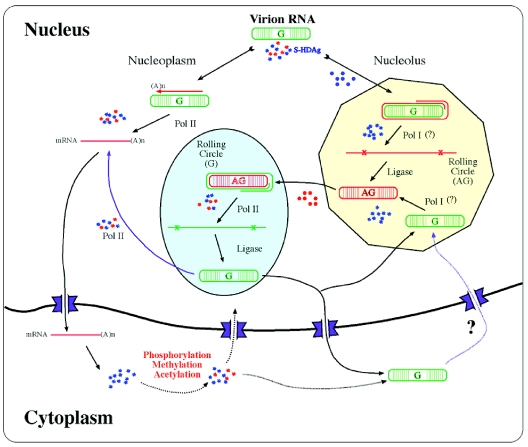FIG. 2.
A hypothetical model of the HDV RNA replication cycle. The viral genome is first transported via the unmodified HDAg into the nucleolus, where the antigenomic (AG) RNA is synthesized by a rolling-circle mechanism. This step does not require HDAg modification (blue stars represent unmodified HDAg, and red stars represent modified HDAg). The responsible enzyme is postulated to be pol I. The AG RNA is transported via the modified HDAg to a nucleoplasmic organelle for the synthesis of genomic (G) RNA. This transport and the subsequent rolling-circle replication of the G RNA require the modified HDAg. Some viral RNA is transported to an unidentified site for transcription of the mRNA, which is then exported to the cytoplasm for translating HDAg. The HDAg requirement of mRNA transcription is still not clear. The newly synthesized HDAg is modified in the cytoplasm. The G RNA is transported back to the nucleolus, and some of it is transported to the cytoplasm. The fate of the G RNA in the cytoplasm is still not known; some may be transported back to the nucleus. The natures of the subnuclear compartments housing the synthesis of the various RNA species are not certain, although it is hypothesized that antigenomic RNA synthesis occurs in the nucleolus.

